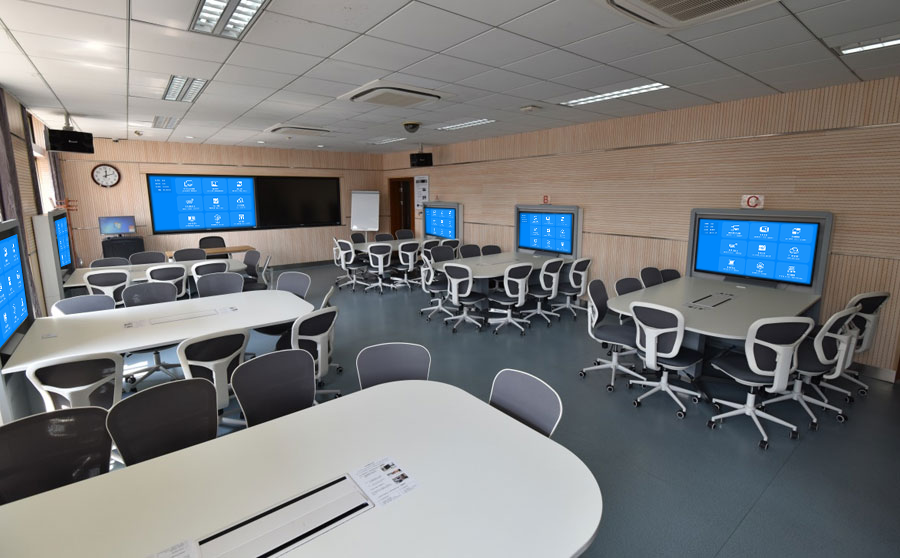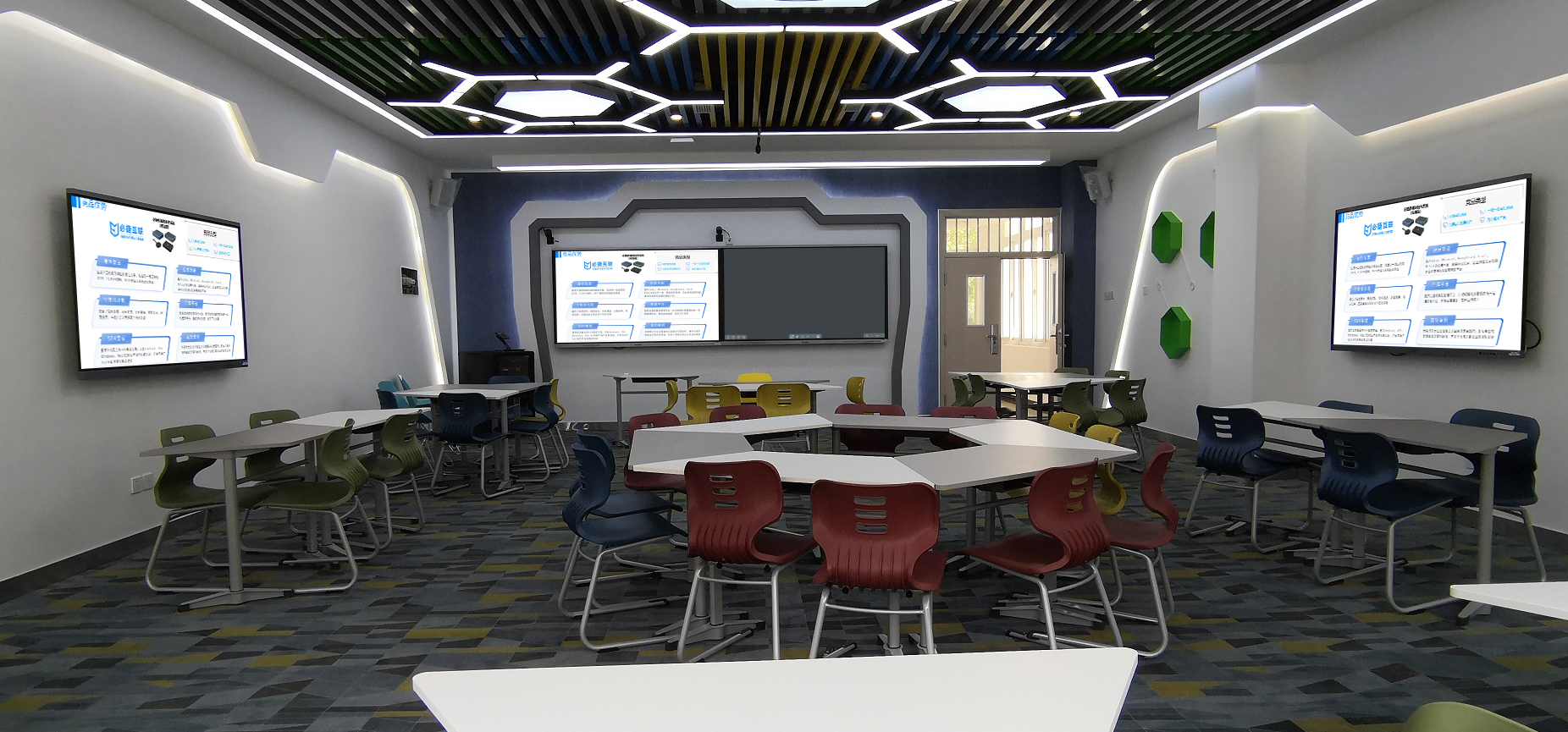Multi-Screen Interaction: Breaking Through Single Screen Limitations for Enhanced Collaboration
In an era of rapid information flow, a single screen often struggles to meet complex collaboration demands. Multi-screen interaction, through technological innovation, enables devices like phones, computers, tablets, and large displays to form an interconnected smart network. This achieves real-time content sharing and two-way operational linkage, creating a new paradigm for efficient collaboration in offices, education, creative work, and more.
I. Seamless All-Device Interconnection: Breaking Screen Barriers
The core of multi-screen interaction is to build a boundless device ecosystem, allowing different types and systems of terminals to have “barrier-free conversations”:
Cross-System Full Compatibility: It supports a full range of protocols including AirPlay, Miracast, WiDi, Google Cast, and Huawei Cast+, covering iOS, Android, Windows, and macOS. Whether it’s a designer’s MacBook, an engineer’s Windows laptop, or a student’s Android tablet, all can easily join the interactive network, preventing information silos caused by device differences. For example, in a corporate seminar, the marketing department can share research data from an Android phone, while the tech department displays prototype solutions from a Windows computer, both syncing in real-time to the large meeting screen, significantly boosting collaboration efficiency.
Flexible Switching of Multi-Mode Connections: You can flexibly choose between “one-to-one projection” (phone to large screen), “one-to-many distribution” (computer content synced to multiple group screens), or “many-to-one compilation” (multiple device content displayed centrally) depending on the scenario. In the classroom, a teacher can “broadcast” courseware to all group screens, ensuring key points are conveyed simultaneously. Each group’s discussion results can be displayed with a single “drag to main screen” action, allowing the whole class to compare different ideas and fostering more thorough brainstorming.
Lightning-Fast, Zero-Wait Connection: Device pairing can be completed within 3 seconds using methods like a 6-digit casting code, NFC tap, or QR code scanning, with no need to install drivers or specialized software. Even temporary visitors can quickly connect with unfamiliar devices; for instance, a client can scan a QR code with their phone to project their requirements, eliminating the need for pre-configuration and boosting collaboration initiation efficiency by 80%.
II. Two-Way Interactive Operation: From “Content Display” to “Deep Co-creation”
Multi-screen interaction is far more than simple screen duplication; it enables each screen to become an “interactive node” through two-way control, leading to deeper collaboration:
Cross-Screen Reverse Control: The large screen can not only receive content but also directly control the mirrored device. In a meeting, you can use the large touch screen to flip through PPT slides on a computer or annotate documents from a phone, eliminating the need for the presenter to switch back and forth between devices. During design reviews, a client can circle modification points on the large screen, with operations syncing to the designer’s computer for more efficient real-time adjustments.
Real-Time Annotation and Multi-Person Collaboration: Once content is mirrored, other terminals can annotate it (using different colors to distinguish users) with text, lines, or shapes, and these annotations sync in real-time to all screens. In the classroom, students can use tablets to mark questions on courseware, while the teacher views them in real-time on the main screen and provides targeted explanations. In project discussions, team members can real-time circle modification suggestions on proposal documents, turning “one-way explanations” into “multi-directional discussions,” boosting decision-making efficiency by 50%.
Content Drag-and-Drop and Integration: It supports dragging and combining content such as spreadsheets from Device A, images from Device B, and videos from Device C onto a single screen for compiled display. When the marketing department analyzes quarterly performance, they can simultaneously compare user feedback from phones, sales data from computers, and competitor analysis from tablets. This intuitive presentation of multi-dimensional information accelerates the decision-making process.
III. High-Definition, Stable Transmission: Ensuring a Smooth Collaboration Experience
The core of the multi-screen interaction experience lies in the clarity and stability of content delivery. A professional solution achieves “zero-loss” presentation:
4K+60fps Ultra HD Quality: Supports 4K resolution and a 60 frames per second refresh rate. When playing high-definition videos, there’s no motion blur. CAD drawings show clear lines, and even animations and transitions within PPTs are precisely reproduced. When design companies review product prototypes, 4K quality allows clients to clearly see intricate textures, leading to more accurate decisions.
Millisecond-Level Low Latency: Through optimized transmission algorithms, latency is compressed to within 80ms (virtually imperceptible to the naked eye). When game development teams mirror for testing, control commands and visual feedback synchronize in real-time, ensuring testing accuracy. In online classrooms, when a teacher uses a writing tablet to derive formulas, students view it in real-time on the large screen, just like in a face-to-face class.
Anti-Interference Stability Like Wired: Uses dual-band Wi-Fi (2.4G+5G) and dynamic frequency hopping technology to ensure stable transmission even in environments dense with microwaves or routers, preventing screen freezes or audio-video desynchronization. In large meetings, even with 20 devices connected simultaneously, screen mirroring remains smooth, ensuring uninterrupted collaboration.
IV. Deep Multi-Scenario Adaptation: Making Collaboration Ubiquitous
The value of multi-screen interaction lies in its deep integration into different scenarios, addressing specific pain points:
Office Collaboration: In meeting rooms, multi-screen linkage for presenting proposals, real-time annotation and modification, and rapid file transfer boost meeting efficiency by 50%. For remote work, mirroring a computer to a large home screen and using a phone as a control device creates an immersive “small screen operation, large screen display” office experience, comparable to in-person collaboration.
Education and Teaching: The teacher’s main screen connects with student tablets and group screens. Courseware can be distributed with one click, student answers are given real-time feedback, and group discussion results are projected for display. Classroom interaction participation rates increase from 60% to 95%, and knowledge absorption efficiency improves significantly.
Creative Work: In a design team, designers project their initial drafts from computers, planners add ideas from tablets, and clients annotate changes on phones. Multi-terminal collaboration shortens the creative cycle from inception to completion by 40%, avoiding efficiency loss from repetitive communication.
Multi-screen interaction breaks device barriers with all-protocol connectivity, deepens collaboration through two-way interaction, and ensures reliable implementation with stable performance. It is not just a technological integration but a revolution in collaboration models, making information transfer more efficient, creative brainstorming more direct, and team coordination more seamless, becoming a core tool for boosting collaborative power in the digital age.